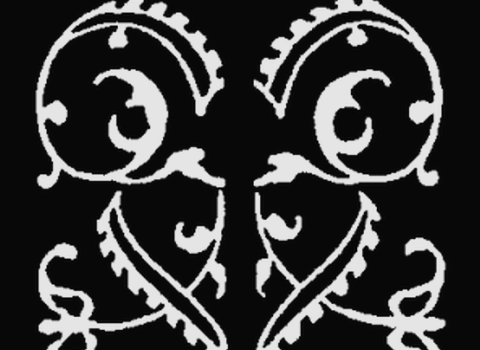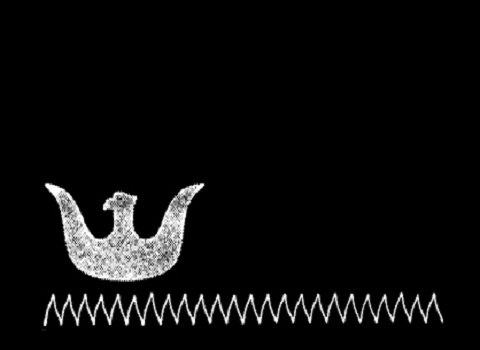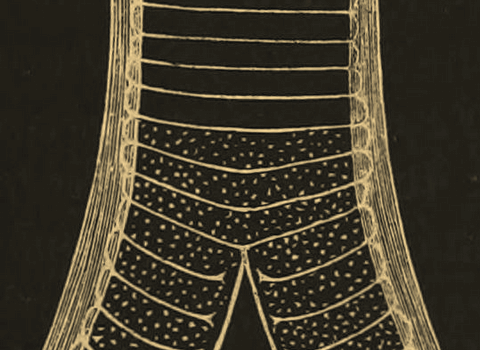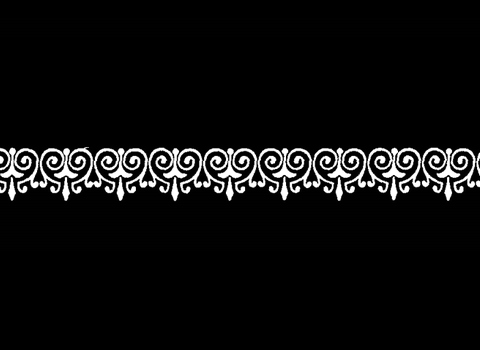Literary Criticism
England
- By Rupin W. Desai
- Publication Date: 1971
- Region: 20th Century
- DOI: 10.21985/N2441H
In Yeats’s Shakespeare, the first full-length study of Yeats’s interest in Shakespeare, Rupin W. Desai explores how Shakespearean works influenced Yeats’s poetry and mythological drama. Exploring Shakespeare’s sonnets and Yeats’s poetry, Desai illustrates the deep degree to which Yeats identifies with Shakespeare, even to the extent of including some of Shakespeare’s heroes in his own late poetry. Yeats’s Shakespeare also includes an appendix that lists in detail all of Yeats’s references to Shakespeare’s works.
- By Alan C. Dessen
- Publication Date: 1971
- Region: 17th Century
- DOI: 10.21985/N20F00
Alan C. Dessen’s Johnson’s Moral Comedy asks the question about the character of Ben Jonson’s comedies: were they sentimental or were they didactic and moralistic comedies? Dessen’s groundbreaking text remains significant for its contribution to early conversations about Jonsonian comedy, as well as its contribution to the practice of ethical criticism of literature. In his close readings of Jonson’s plays, he offers a model of engaging in such critical practice.
- By Robert S. Jackson
- Publication Date: 1970
- Region: Elizabethan
- DOI: 10.21985/N2ZD8C
John Donne’s poetry is often difficult and perplexing, even more so because it undergoes a shift away from secular topics after he converts and begins to lead a religious life. Robert S. Jackson’s John Donne’s Christian Vocation is one of the first studies that takes seriously the ways that Donne’s Christian vocation permeates all of Donne’s writings, not just those after his conversion, but even those prior to it. Jackson’s study remains significant today because the religion and literature movement has focused renewed attention on Donne and his writing, and numerous critics and scholars use John Donne’s Christian Vocation as a model for their own scholarship on Donne.
- By Paul Kent Alkon
- Publication Date: 1967
- Region: 16th Century
- DOI: 10.21985/N2WM62
Paul Kent Alkon’s Samuel Johnson and Moral Discipline provides reading of Johnson that emphasizes his moral discourse. Shortly after its publication, Alkon’s book became first of all the standard reading of Johnsons essays, contrasting them with the moral ideas Johnson discussed in his sermons, as moral writings, and second, as one of the first books on Johnson to explore the essayist’s focus on moral thinking as central to his writing.
- By Glenn O’Malley
- Publication Date: 1964
- Region: 19th Century
- DOI: 10.21985/N2XD9F
Glenn O’Malley’s Shelley and Synesthesia examines a little-known aspect of Percy Shelley’s poetry, offering a history of synesthesia and engaging in close readings of Shelley’s poetry, focusing primarily on his longer works. O’Malley explores the internal structure of Shelley’s poems to concentrate on patterns of imagery and symbolism, bringing attention to Shelley’s resourcefulness and responsibility in his use of synesthesia and his development of it into a powerful creative tool. The work advances the conversation on literary synesthesia and brings fresh insights to Shelley’s poems and to poetic theory in Romanticism.
- By Orlando Park
- Publication Date: 1962
- Region: 19th Century
- DOI: 10.21985/N2BH96
This encyclopedia serves as a guide to the fifty-six stories and four novels that comprise the Sherlock Holmes canon. Arranged alphabetically, Orlando Park provides entries on all manner of people, places, and objects from Arthur Conan Doyle’s novels and stories, as well as thorough treatments of the traits and opinions of Holmes and Watson. Throughout Park intends not only to answer questions but to stimulate curiosity, making the book an engaging guide for both the Sherlock Holmes aficionado and the reader new to Holmes’s world.
- By Robert D. Mayo
- Publication Date: 1962
- Region: 18th Century
- DOI: 10.21985/N29Q76
The English Novel in the Magazines, 1740-1815, explores the popularity of magazines in the nineteenth century and the ways that much of the published fiction of the time appeared serially in these publications. Robert D. Mayo’s groundbreaking study remains important to scholars of the nineteenth century as one of the first books to examine in a systematic manner the impact of magazines on reading and the dissemination of fiction in nineteenth-century England.
- By S. Schoenbaum
- Publication Date: 1962
- Region: Elizabethan
- DOI: 10.21985/N2P12T
Internal Evidence and Elizabethan Dramatic Authorship provides one the earliest attempts to write a theoretical method for evidence within plays to help determine authorship or to help distinguish the work of one author from another. Samuel Schoenbaum’s study remains valuable, for the attempt to attribute unattributed plays to one or another author remains an ongoing conversation within early modern scholarship today.
- By Alan Denison
- Publication Date: 1961
- Region: 20th Century
- DOI: 10.21985/N2RQ77
This bibliography lists the books, paintings, and portraits of the mystic Irish poet George William Russell, best known by his pseudonym, “AE” Russell was a late nineteenth-and early twentieth century Irish poet and essayist whose first book of poems, Homeward: Songs by the Way (1894), established him in what was known as the Irish Literary Revival.</DIV>
- By Eliseo Vivas
- Publication Date: 1960
- Region: 20th Century
- DOI: 10.21985/N27Q7K
In D. H. Lawrence, Eliseo Vivas examines the aesthetic triumphs and failures of Lawrence’s major works through a literary device that he coins the constitutive symbol. Understanding how Lawrence uses the constitutive symbol provides new insight into his world views. Vivas covers a wide range of Lawrence’s work, including Aaron’s Rod, Kangaroo, The Plumed Serpent, Lady Chatterley’s Lover, Sons and Lovers, The Rainbow, and Women in Love. Vivas was one of the first scholars to use psychological criticism to read Lawrence’s works; Vivas’s and his particularly fresh reading of Lawrence’s novels continue to make this a significant literary-critical study.
- By Frederic E. Faverty
- Publication Date: 1951
- Region: 19th Century
- DOI: 10.21985/N2GD9D
Matthew Arnold the Ethnologist, originally published in 1951, makes the original argument that the renowned English critic Matthew Arnold contributed to the climate of racialism current during his lifetime. Frederic E. Faverty shows that in his essays on national character, Arnold used anthropological concepts of race and language, albeit inconsistently. Faverty’s critique of Arnold draws particular attention to the lack of a specifically cultural (rather than racial) analysis of the type pioneered by his contemporary Edward Burnett Tylor.
- By William Warner, edited with introduction and notes by Wallace A. Bacon
- Publication Date: 1950
- Region: 16th Century
- DOI: 10.21985/N2HF0N
William Warners Syrinx, or a Sevenfold History, may be the first English novel. Unlike others of the time, though, Warner wrote a realistic novel whose ancestors include the adventure stories of Alexandrine romance, and focus not on the tales of an aristocratic class but on the lives of middle-class individuals. Wallace A. Bacon’s critical edition brings Warner’s important novel –with its young protagonists being dragged through many adventures, tried and tested by Fortune, with their tales being brought to a close by auspicious gods– to life, preserving it and introducing it to new generations of readers. Bacons critical apparatus, including an extensive introduction, provides significant context for Warner’s work, assessing its key role in the history of the novel and in the history of early modern literature.
- By Sigmund Eisner
- Publication Date: 1950
- Region: Middle Ages
- DOI: 10.21985/N2QX57
Tristan und Isolde (Tristan and Iseult) remains one of the most popular romances ever written. Although the tale was believed to have originated in Germany, bards in France and Britain composed their own versions of the story, a tale of adultery, betrayal, mistaken identity, and thwarted love. In The Tristan Legend, Sigmund Eisner offers a study of the sources of the Tristan romance, tracing them through the various versions of the legend. He makes the original claim that the story was first written in North Britain during the seventh century, that it involves people who actually lived in the area, and that its writer wove in motifs from various classical legends to the tale of the two lovers.
- By Lambert Ennis
- Publication Date: 1950
- Region: 19th Century
- DOI: 10.21985/N2M70H
Thackeray: The Sentimental Cynic chronicles British novelist William Thackeray’s ambivalent attitudes toward society and traces his conduct during the major crises of his life in terms of those attitudes. Lambert Ennis examines the emotional tensions in Thackeray’s life and the impact they had in his work. In so doing, he illustrates key themes in Victorian studies more broadly: the question of manners and taste and the relationship between sentimentality and authenticity, and the ways that sentimentality might shape morality.
- By Ruth W. Ames
- Publication Date: 1950
- Region: Medieval
- DOI: 10.21985/N2N415
Ruth M. Ames’s The Fulfillment of Scriptures approaches Langland’s key medieval text, Piers Plowman, using critical literary methods developed in interdisciplinary programs that explore the intersections of religion and literature. Ames draws on the history of the development of Christian doctrine as she explores the ways that the allegory of Piers parallels the story of Jesus in Christian doctrine. Ames’s work offers a significantly new critical reading of Piers Plowman, influencing interpretations of medieval literature.
- By Virgil B. Heltzel
- Publication Date: 1947
- Region: Medieval
- DOI: 10.21985/N23717
In Fair Rosamond, Virgil B. Heltzel traces the character of Rosamond Clifford, known as Fair Rosamond - which has its origins as a theme in medieval literature -through its use in poetry and plays and novels, from the Renaissance through the early twentieth century. Heltzel’s book retains its importance today for scholars tracing certain thematic structures through all periods of literature.
France
- By Jean de la Fontaine, edited and with a rhymed verse translation by Norman B. Spector
- Publication Date: 1988
- Region: 17th Century
- DOI: 10.21985/N2M13K
This edition of Jean de La Fontaine’s fables includes an English translation published alongside the French text. Norman Spector adapted the French text from the 1883-85 edition by Henri Regnier, adding four tales from the 1962 edition by Georges Couton. Spector’s translation is in rhymed verse, and remains faithful to the original not only in metrical patterns and rhyme schemes but also in tone: wit and le mot juste are skillfully and wonderfully combined. This translation gives the reader of English a chance to enjoy the grace, wit, and versatility of La Fontaine.
- By William Thomas Starr
- Publication Date: 1950
- Region: 20th Century
- DOI: 10.21985/N2DH72
Late nineteenth-and early twentieth-century French writer Romain Rolland remains best known for his epic coming-of-age tale, Jean Christoph. In A Critical Bibliography of the Published Writings of Romain Rolland William Thomas Starr Starr painstakingly collects the information on all writings by and about this prolific author through 1949. Organized into two parts, the bibliography lists the writings of Rolland first, and a devotes second section to studies, comments, reviews, attacks, and homages.
- By Aimeric de Peguilhan, edited and translated with introduction and commentary by William P. Shepard and Frank M. Chambers
- Publication Date: 1950
- Region: Medieval
- DOI: 10.21985/N2J718
Poems of Aimeric de Peguilhan is the first critical, annotated translation in English of the collected work of poet Aimeric de Peguilhan. In it, William P. Shepard and Frank M. Chambers provide translations and introductory material to the work of the medieval French troubadour.
- By Bernard Weinberg
- Publication Date: 1950
- Region: Renaissance
- DOI: 10.21985/N2171M
Critical Prefaces of the French Renaissance contains nearly 30 prefaces from the works of French poets and dramatists published from 1525 to 1611. Bernard Weinberg’s helpful book collects prefaces from the works of satirical poets, as well as dramatists, and provides a short introduction to each preface setting it in its literary and historical context. Lyrical and satirical poets represented vary from Marot to Du Bellay to Ronsard. Dramatists represented include Jean de la Tille and Larivey, among others. The larger introduction to the volume provides literary analysis of five longer texts by Sebillet, Du Bellay, Peletier du Mans, the obscure Pierre De-laudun, and Horace. Weinberg’s study brings attention back to these primary writings that are crucial for an understanding of the period.
Ireland
- By Dounia Bunis Christiani
- Publication Date: 1965
- Region: 20th Century
- DOI: 10.21985/N2CM6D
In Scandinavian Elements of Finnegan’s Wake, Dounia Bunis Christiani addresses herself to an enormous task: examining the significance of Scandinavian history, literature, and languages for the composition of James Joyce’s masterwork. Whereas critical studies of Joyce tend to fall into two categories – those exploring the philosophical grounding of his works and those providing close textual readings – the significance of Christiani’s work lies in her deep historical and cultural analysis.
Reference
Originally published in 1945, An Historical and Analytical Bibliography of the Literature of Cryptology provides a comprehensive listing of the most important works written up to that time on cryptography, as well as works in related fields in which cryptography appears. It includes a vast range of materials: scientific and technical works dealing with military, diplomatic, and commercial uses of cryptography; popular treatments; cuneiform, runic, and other hieroglyphic writings; literary anagrams and acrostics; the symbolism of colors, gems, emblems, and insignia, and many other manifestations. Entries include descriptive and analytical annotations by the author.
Russia
- By N. M. Karamzin, translated and with an introduction by Henry M. Nebel Jr.
- Publication Date: 1969
- Region: 16th Century
- DOI: 10.21985/N2271X
In Selected Prose of N. M. Karamzin, Henry Nebel’s translation and extensive introductory material presents a collection of primary sources by a Russian author whose tales explore the creative exploitation of sentimentalism’s potentialities.
Theory
Literary Modernism and the Transformation of Work probes the relationship between the aesthetic structures of modernism and its political and philosophical shape. James F. Knapp explores modernism’s engagement with and reaction to the theories and discourse of scientific management that were reshaping the workplace in the early twentieth century, and in so doing, he traces the ways in which a socially dominant discourse of knowledge is reproduced - and challenged - through a series of texts that range from the marginal to the most fully canonized.
Dark Conceit is the first book in English to treat allegory seriously in terms of literary creation and criticism. The study explores the methods and ideas that go into the making of allegory, discusses the misconceptions that have obscured the subject, and surveys the changing concept of allegory. The greater part of the book concerns the typical features of allegorical fiction, focusing on a group of Romantic and contemporary writers, including Melville, Hawthorne, and Kafka, who continue the allegorical tradition in literature. Such writers, along with Lawrence, James, and Joyce, are taken to be the modern counterparts to an earlier group of pastoral, evangelical, and satirical writers represented by Spenser, Bunyan, and Swift. Honig’s thesis is that literary allegory, while symbolic in method, is realistic in aim. Its very power lies in its giving proof to the physical and ethical realities of life objectively conceived.
United States
- By Mark Krupnick
- Publication Date: 1986
- Region: 20th Century
- DOI: 10.21985/N2WH95
Lionel Trilling was one of the twentieth century’s most widely read and influential American literary critics. Mark Krupnick traces Trilling’s career from the 1920s through the 1970s, following the shifting intellectual and ideological currents in his thought. Krupnick places Trilling’s criticism and fiction in the context of his New York intellectual group, illuminating the connection between Trilling’s preoccupation with self-definition and his struggle to achieve a cultural overview in a period marked by contradictions, polarizations, and reversals. He provides not only the best single assessment of Trilling but also an incisive history of American literary criticism through the mid-twentieth century.
- By James F. Light
- Publication Date: 1971
- Region: 20th Century
- DOI: 10.21985/N2GB09
This study of the novels of Nathanael West begins with the important threads of West’s life and their relationship to his works. James F. Light gives a detailed analysis of each of West’s novels, investigating in particular the works’ treatment of social criticism and manipulation of dream and symbol.


























